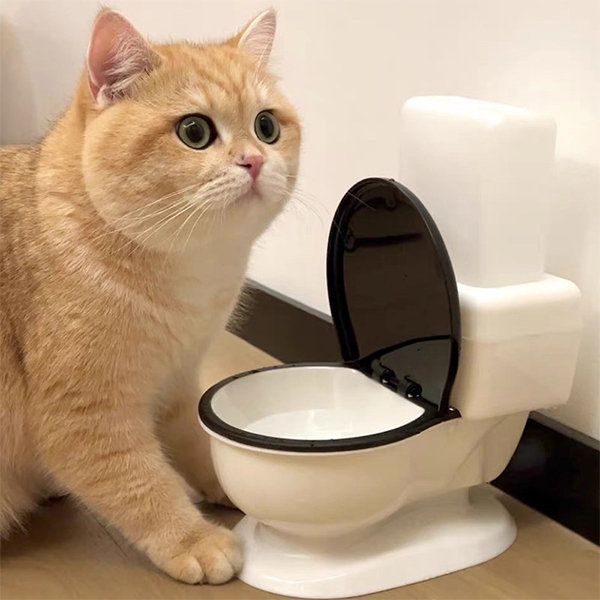Dangers of Flushing Cat Poop in Your Toilet - Precautionary Measures
Dangers of Flushing Cat Poop in Your Toilet - Precautionary Measures
Blog Article
In this article below you'll find lots of good quality information regarding How to Dispose of Cat Poop and Litter Without Plastic Bags.

Introduction
As pet cat proprietors, it's vital to bear in mind exactly how we throw away our feline buddies' waste. While it might appear hassle-free to flush cat poop down the bathroom, this method can have harmful repercussions for both the atmosphere and human wellness.
Ecological Impact
Purging pet cat poop introduces hazardous pathogens and parasites right into the supply of water, presenting a substantial threat to marine ecological communities. These contaminants can negatively influence aquatic life and concession water quality.
Health Risks
In addition to environmental concerns, flushing pet cat waste can additionally posture wellness threats to people. Feline feces may contain Toxoplasma gondii, a bloodsucker that can create toxoplasmosis-- a possibly serious illness, specifically for expectant ladies and individuals with weakened immune systems.
Alternatives to Flushing
The good news is, there are safer and more responsible ways to take care of pet cat poop. Take into consideration the following alternatives:
1. Scoop and Dispose in Trash
One of the most typical method of dealing with feline poop is to scoop it into a biodegradable bag and toss it in the trash. Be sure to make use of a committed trash inside story and get rid of the waste immediately.
2. Use Biodegradable Litter
Select naturally degradable cat clutter made from materials such as corn or wheat. These trashes are eco-friendly and can be safely gotten rid of in the trash.
3. Hide in the Yard
If you have a lawn, consider hiding cat waste in an assigned area away from vegetable yards and water resources. Make sure to dig deep sufficient to prevent contamination of groundwater.
4. Set Up a Pet Waste Disposal System
Invest in a family pet waste disposal system particularly made for cat waste. These systems utilize enzymes to break down the waste, lowering smell and environmental influence.
Conclusion
Accountable pet ownership expands past providing food and sanctuary-- it likewise involves correct waste administration. By avoiding flushing feline poop down the commode and choosing different disposal methods, we can decrease our ecological impact and protect human health.
Why You Should NEVER Flush Cat Poop (and/or Litter) Down Your Toilet
The Problem with Litter
The main function of litter is to solidify and adhere to your cat’s waste. While this makes litter excellent for collecting cat poop and urine, it’s also the exact property that makes it a nightmare when flushed down the toilet.
Cat litter can and will clog pipes. There is non-clumping litter, but it’s still quite heavy and can build up in pipes. This is true even of supposed “flushable litter.”
The problems only compound when the litter is already clumped into cat waste. Toilet paper is among the more flushable things, and even too much of that will clog a toilet.
The Problem with Cat Poop
Sewers and septic systems are designed with human waste in mind. The microbes that help break down human waste don’t work on cat waste. Additionally, cat poop plays host to the parasite Toxoplasma gondii.
When flushed, this parasite can enter the environment in places it was never meant to, posing a risk to pregnant women, their unborn children, and other people with compromised immune systems. While it might not seem possible, flushing cat poop can indeed introduce this parasite to the public water supply.
These reasons are why, even if you’ve trained your cat to go on the toilet and flush, which is possible, it’s still not a good idea. Also, pregnant women and the immunocompromised shouldn’t change litter, either.
How to Handle Litter
The best way to handle litter is to simply put it in a plastic bag and place it in the trash. Avoiding environmental risks and possible plumbing damage is worth the extra effort.
You can also invest in devices that seal away your cat’s waste in a separate compartment, so you don’t have to change the litter nearly as often. They’re also safer for pet owners because they limit the possibility of Toxoplasma gondii exposure.
Disposing of litter the old-fashioned way will ensure you won’t have to worry about any issues that flushing the waste can potentially cause.
Take Care of Clogged Pipes with Stephens Plumbing, Heating & Air Conditioning
The reasons you should never flush cat poop down your toilet are numerous, but sometimes the inevitable happens despite your best efforts.
Stephens Plumbing, Heating & Air Conditioning is ready to help if you’re experiencing litter-blocked plumbing. Whether you need us in an emergency or want to schedule regular maintenance, we’re here for you.
https://www.stephensplumbing.net/bathroom-plumbing/never-flush-cat-poop-down-your-toilet/

As a keen person who reads on Can You Flush Cat Poo or Litter Down the Toilet?, I imagined sharing that post was sensible. Liked our piece of writing? Please share it. Let other people check it out. Thanks for your time invested reading it.
Schedule An Appointment Report this page